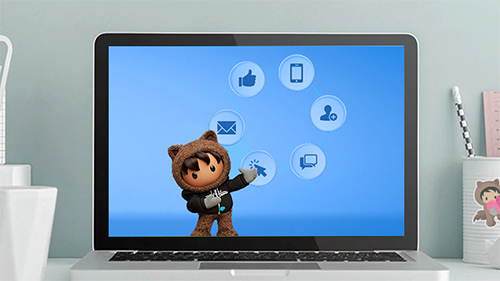COVID-19 has accelerated digital adoption. More customers are now open to e-retail, enrolling for virtual education, and making financial investments online. And amidst all these changes, organisations are looking at marketers to boost customer engagement and loyalty. As marketers, how do you get customers to spend again, and communicate how your products and services are aligned to their changing needs?
To provide actionable insights for marketers and brand custodians, Salesforce recently hosted a webinar on How to Innovate in Times of Disruption.
Hosted by Saurabh Rawal, Data & Identity Lead at Salesforce, the session featured James McQuivey, Ph.D., Principal Analyst & VP at Forrester, and the author of Digital Disruption: Unleashing the Next Wave of Innovation.
Here are a few key takeaways from the discussion:
1. Start and end with the customer
Forrester has identified four fundamental needs every customer has. Customers enjoy comfort, they want to stay connected, express their uniqueness, and choose from a great variety.
Marketers can support their organisation in creating communication and brand identity that showcases how their business is obsessed with fulfilling these customer needs. There’s a direct bottomline benefit to this approach. A Forrester report on ‘The Customer-Obsessed Enterprise’ discusses how these firms enjoy higher revenue growth, customer satisfaction and employee satisfaction.
2. Use data to build relationships and gain a competitive edge
At a time when communication is high on sympathy, data can help you move the needle to empathy; from ‘we care about you’ to ‘we care about the things that matter to you’. Data lets you hyperpersonalise customer communication to demonstrate this attention to customer preferences.
And with predictive analysis, you can even provide intelligent recommendations that excite and engage your customer. Wouldn’t you be thrilled to receive a message from your beloved pizza brand that tells you that not only are they offering contactless delivery, but that your favourite crust and toppings are already in your cart?
Solutions like Salesforce Marketing Cloud help consolidate customer data from various touchpoints to present a unified view of the customer. With this 360-degree view of customers' interactions, preferences and behaviours, brands can hyperpersonalise communication; and reach out to them with the right messages at the right time. Showing that you care about customer preferences can be more powerful than blanket promotions and offers.
3. Leverage technology to do more with less
The cost of innovation has declined as technology has become cheaper. This, in turn, has increased the pace of (marketing) innovation, helping bring more ideas to market far quicker than before. In these times of slashed marketing budgets, and with customers spending a large chunk of their time online, traditional marketing channels are losing traction. Digital marketing, on the other hand, gives you access to a global audience in a more cost-effective way. Using analytics and social listening, marketers can also create more focused and engaging campaigns.
Metro, for example, tweaked its marketing strategy to launch the #ShoesOffcampaign that recognised the change in customer behaviour due to COVID-19. Through this campaign, the footwear brand promoted social distancing and stay-at-home messaging through contests on Facebook and Instagram while simultaneously encouraging customers to explore fun things to do with shoes.
Get ahead of the new normal
During these extraordinary times, marketers must think like a disruptor. Isolate the parts of your ecosystem that you can influence, such as customer behaviour and spending patterns, and be open to experimenting with new technology.
To know more about how you, as a marketer, can help unlock growth for your company, watch the webinar on How to Innovate in Times of Disruption.



